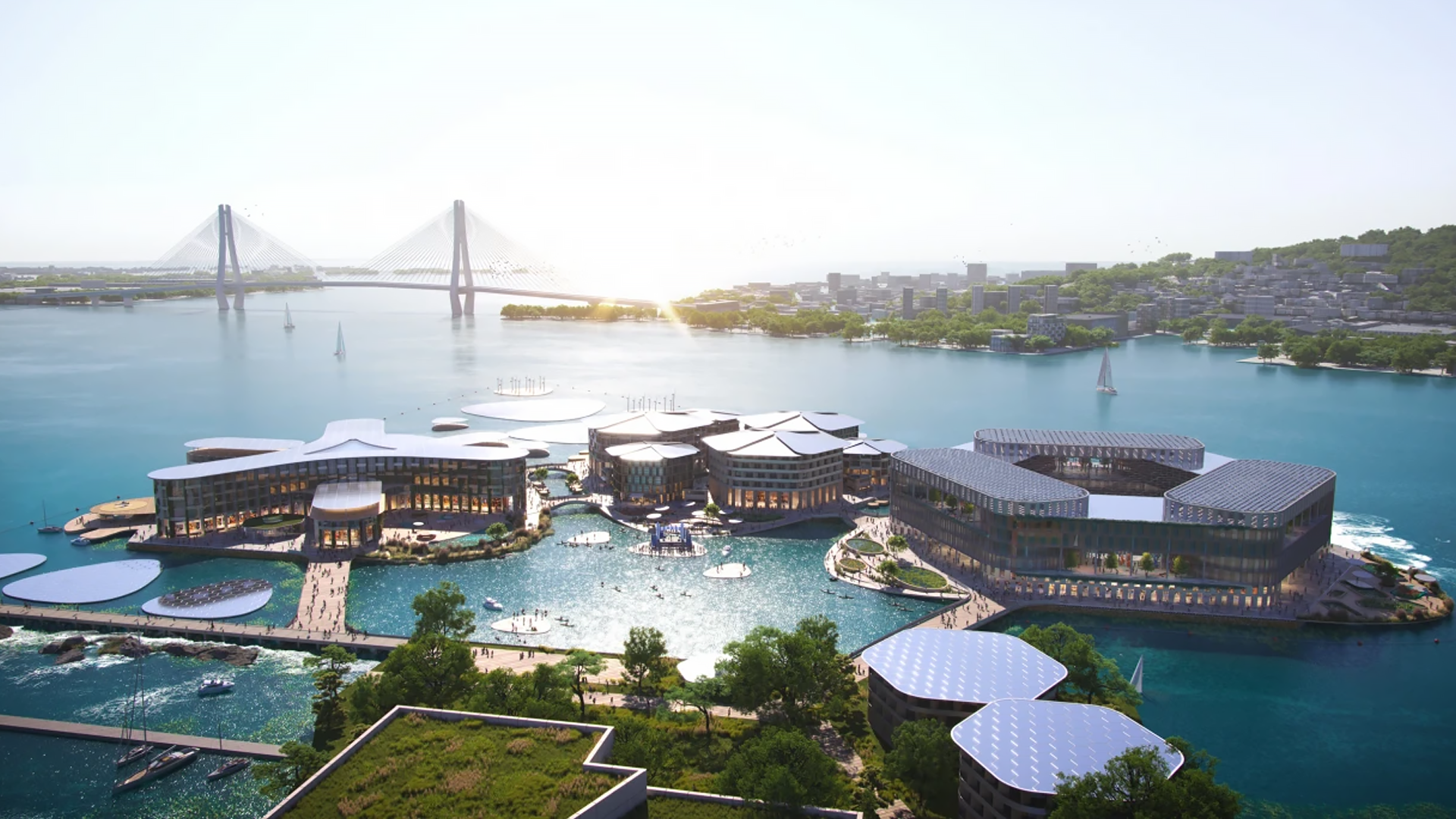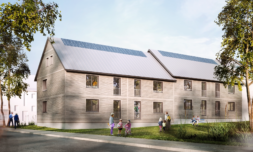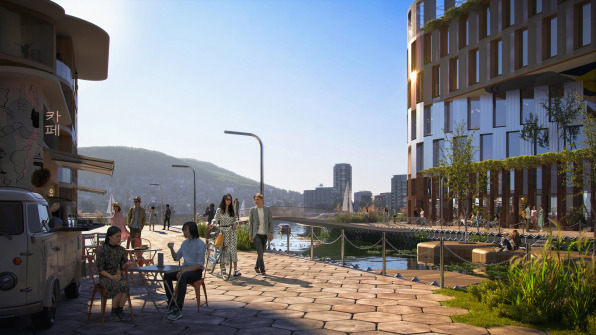Atop large, buoyant concrete platforms anchored to the seabed, a South Korean city will house 12,000 by the mid-century. Able to rise and fall with the water, this trailblazing project has now been backed by the UN.
By the mid-century, some 800 million people will be residing in conurbations where surrounding sea levels could rise by more than half a meter.
When this happens, many of the 500+ threatened cities and towns will be hit with economic strife, increased chance of disease, and even death. We’re all aware of the growing pressure to limit global warming as the root cause, but what’s actually happening practicality wise in terms of planning for the worst?
On that front, a bold real-world experiment is officially slated to take place and (potentially) open a whole new model of real estate development. Intrigued much?
Within South Korea’s city of Busan – which itself is threatened by climate change – a sustainable design start-up called Oceanix is planning to build a floating metropolis able to physically adjust to rising or falling sea levels.
The New York based company has been approved to create three buoyant floats sprawling across a Busan lake: one residential, one for commercial buildings, and a third to conduct on-hand research on floating cities.
Initially, 12,000 people will live and work within the area, but lead architect Bjarke Ingels hopes that the neighbourhood can be gradually expanded. ‘We imagine that it could be the seed of a kind of floating new neighbourhood that over time could grow,’ he said.






















